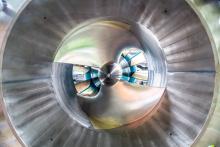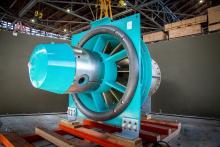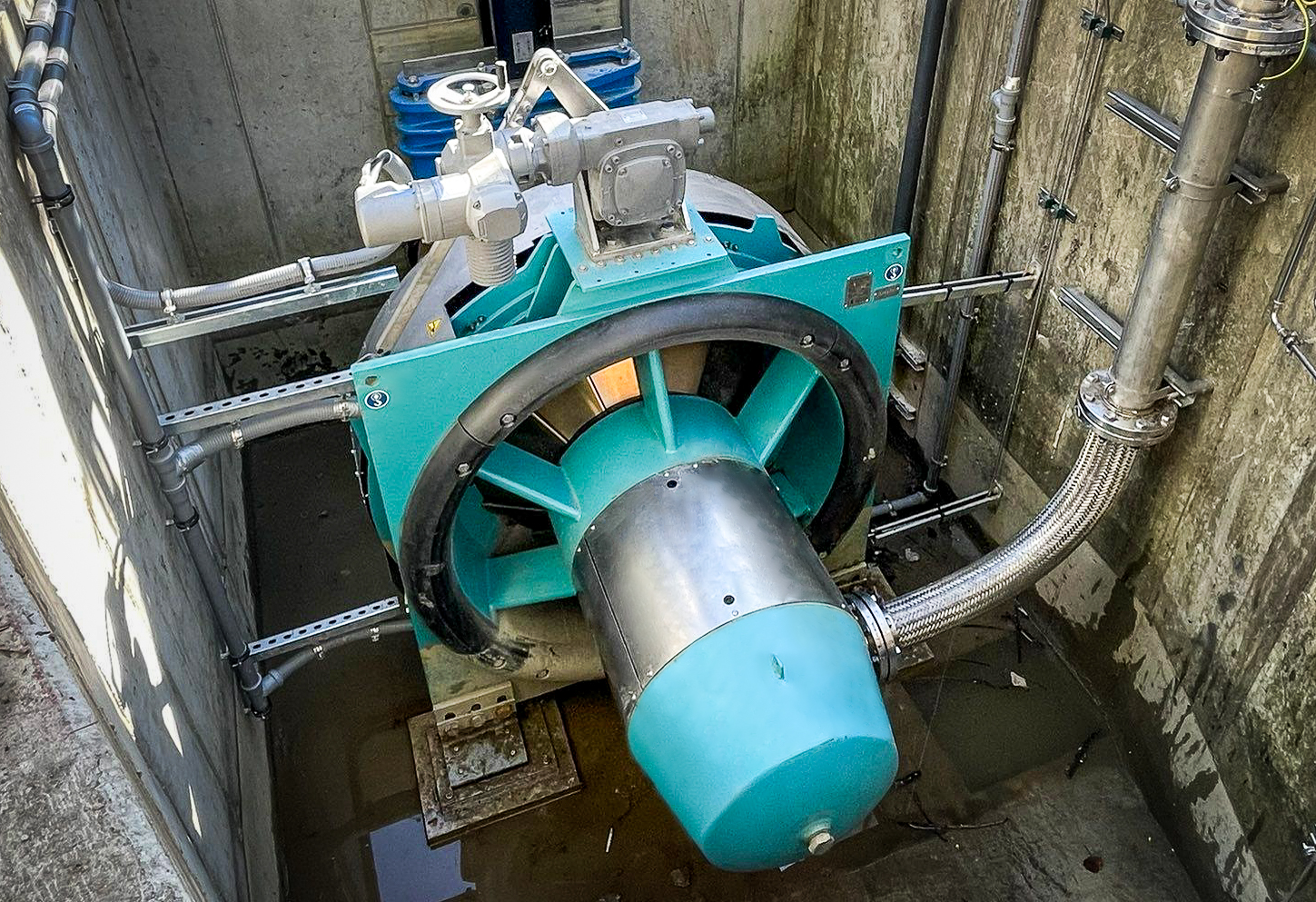Natel's Restoration Hydro Turbine (RHT) is an approach to hydroelectric turbine runner design that couples high performance with safe through-turbine fish passage. The RHT’s uniquely thick and forward-slanted runner blades eliminate the need for fine fish screens, which reduces O&M and CAPEX costs and increases plant efficiency.
Full description
Natel's Restoration Hydro Turbine (RHT) is an approach to hydroelectric turbine design that couples high performance with safe through-turbine fish passage. The RHT approach is a flexible and adaptable solution for a variety of low and medium head (<30 m / 98 ft) hydropower sites and is available as a pre-engineered water-to-wire solution or as a runner-only replacement.
RHTs are defined by their uniquely thick and forward-slanted runner blades, which have demonstrated greater than 99% safe passage of salmonids (trout), alosines (herring), and anguillidae (eels), as verified through multiple studies conducted with scientific organizations such as Pacific Northwest National Laboratory and Alden Laboratory.
The RHT is available in a variety of runner diameters and generating capacities. Direct drive generation, shortened draft tubes, and submersible housings simplify plant design and minimize installation costs. The RHT can be adapted to site conditions in a variety of different configurations, including a bulb, pit, S-turbine, open flume S-turbine, and Z-turbine, which can be either pipe-fed or open flume. Scrollcase turbine and radial inflow open flume configurations are also possible. The RHT product line has a demonstrated efficiency of over 90%.
RHTs are defined by their uniquely thick and forward-slanted runner blades, which have demonstrated greater than 99% safe passage of salmonids (trout), alosines (herring), and anguillidae (eels), as verified through multiple studies conducted with scientific organizations such as Pacific Northwest National Laboratory and Alden Laboratory.
The RHT is available in a variety of runner diameters and generating capacities. Direct drive generation, shortened draft tubes, and submersible housings simplify plant design and minimize installation costs. The RHT can be adapted to site conditions in a variety of different configurations, including a bulb, pit, S-turbine, open flume S-turbine, and Z-turbine, which can be either pipe-fed or open flume. Scrollcase turbine and radial inflow open flume configurations are also possible. The RHT product line has a demonstrated efficiency of over 90%.
Value proposition
Screening has traditionally been mandated as a solution to fish passage at hydropower plants, even though it presents sub-optimal environmental conditions for fish, who still face many challenges such as screen-based impingement and delayed migration. Additionally, screens are costly to install, to maintain, and also reduce overall flow, thereby lowering generation capability. With greater than 99% survival rates, the RHT offers a truly fish-safe option, whereby numerous species can pass multiple dams consecutively, while owners do not have to pay to keep them out of their turbines.
In addition to safe fish passage, RHTs reduce excavation and concrete usage due to their compact design and modularity, and they are available in industry-standard configurations, so they can integrate into existing water passageways without major changes for repowering. Natel turbines are certified for quality and environmental management practices via ISO 9001:2015 and 14001:2015.
In addition to safe fish passage, RHTs reduce excavation and concrete usage due to their compact design and modularity, and they are available in industry-standard configurations, so they can integrate into existing water passageways without major changes for repowering. Natel turbines are certified for quality and environmental management practices via ISO 9001:2015 and 14001:2015.
Payment conditions
Pricing for each RHT depends on site-specific factors including hydraulic head, flow, and diameter of requested turbine. The scope of the sale—the number of turbines, and whether it is only the runner or the whole turbine or a water-to-wire package—will also affect cost. Natel is happy to provide further information during individual consultations.
Brochure or other document





